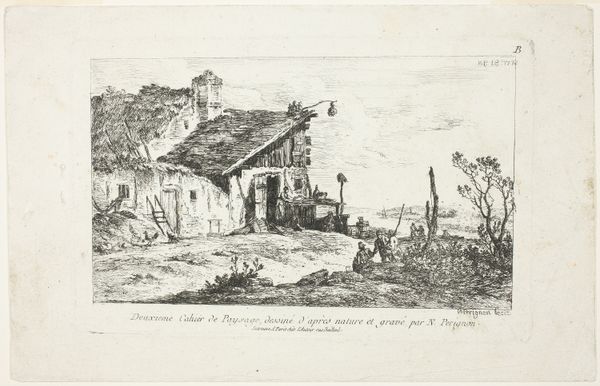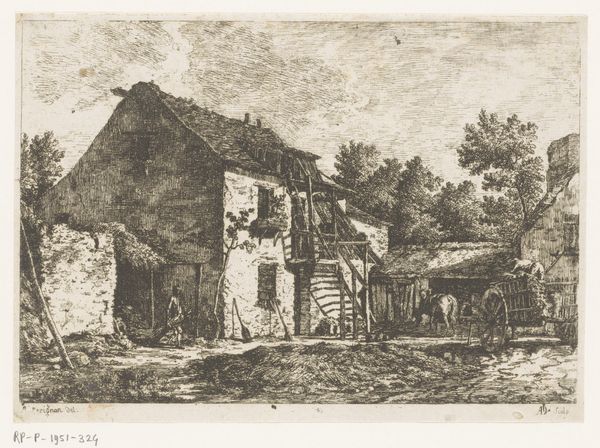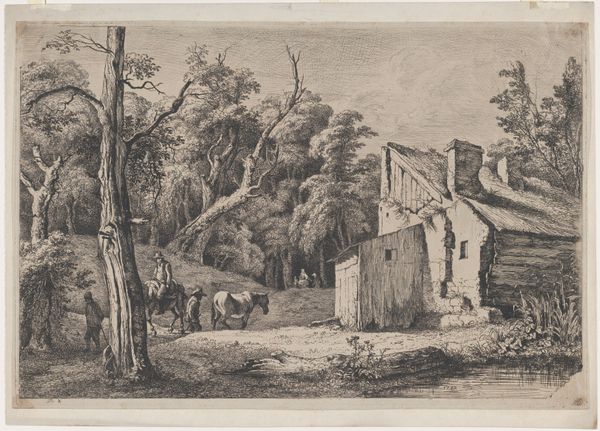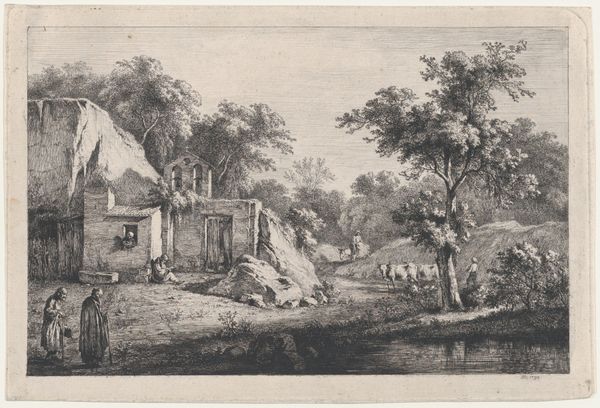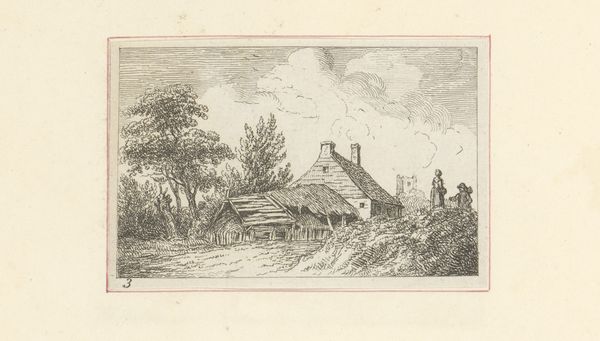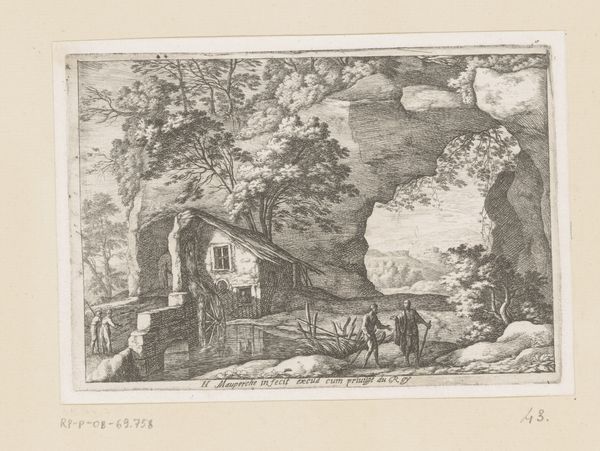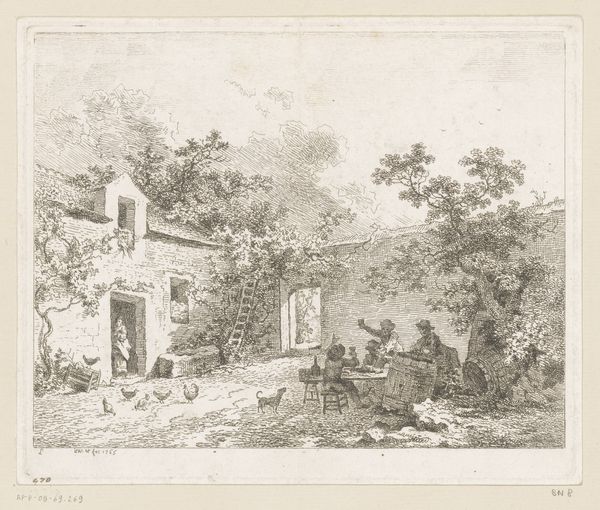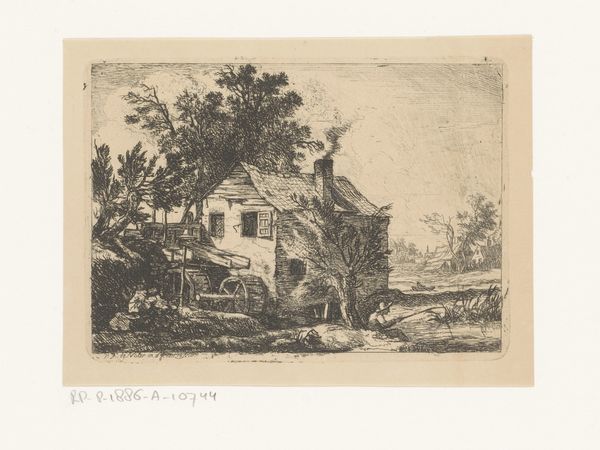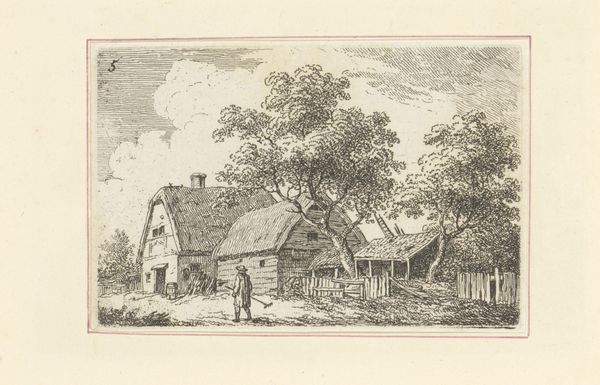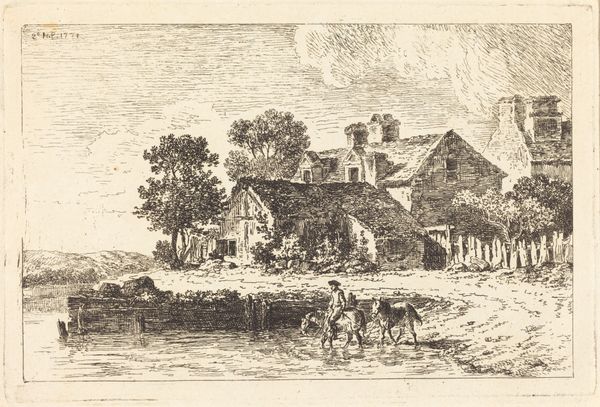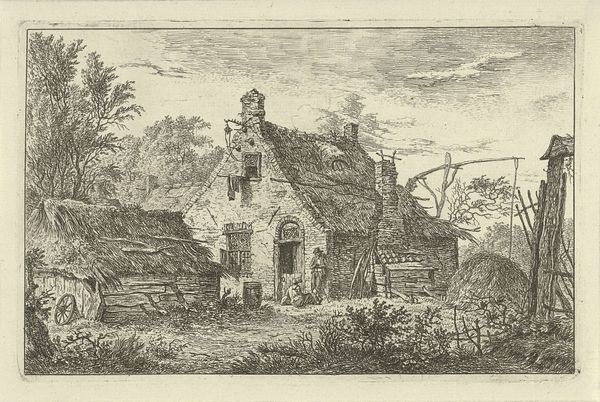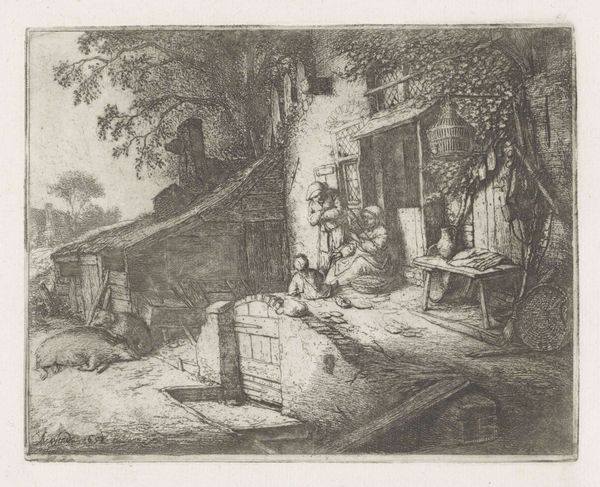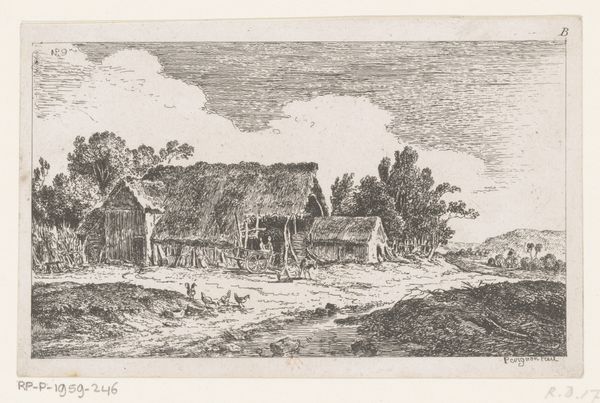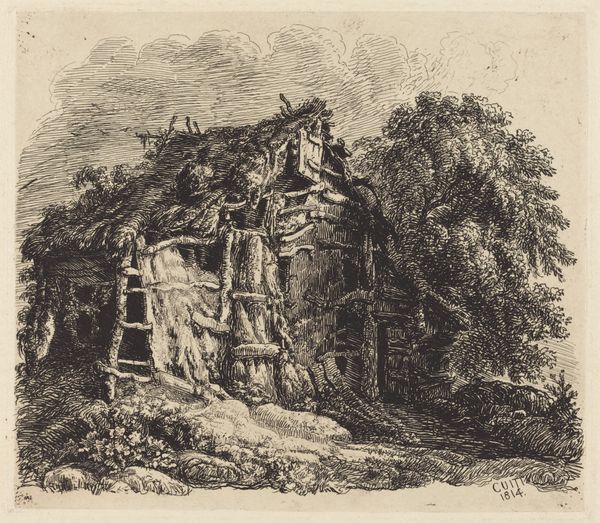
Dimensions: height 200 mm, width 243 mm
Copyright: Rijks Museum: Open Domain
Curator: This etching, titled "Landschap met plattelandshuis," which translates to "Landscape with Country House," was created between 1733 and 1797. It's currently held at the Rijksmuseum, and it's attributed to Pierre François Basan. My first impression is one of dilapidated charm. It almost feels melancholic. Editor: Yes, a tangible feeling of age and wear pervades the work. Considering the period during which this was created, one might contextualize the landscape depicted as embodying the social reality of rural life in contrast to, say, aristocratic pastoral fantasies. The etching captures something of the actual material conditions of the laboring classes. Curator: I see what you mean, the crumbling stone and crooked fenceposts speak to a different kind of pastoral aesthetic – less idyllic, more documentary. I am also struck by how light is conveyed, despite the clear decay there is still this feeling of warmth in the composition and forms depicted. There’s definitely an inviting quality. It's all so familiar, recalling imagery across art history, folklore, and even, subconsciously, early memories. Editor: The composition's strength comes from the central figure. That country house is the key. These types of rustic images were popular; Basan and others found appeal in themes around natural life and perhaps nostalgia, particularly as industrialization began transforming European society. One also notes how symbols like thresholds are used and draw focus from shadow to light. Curator: I suppose a discussion about this work necessarily asks what role that bucolic imagery had as Europe entered a more modern, complex chapter. The romantic idealization, particularly of nature, continues to fuel contemporary ecological narratives. There's a legacy in that symbolism that still resonates. Editor: Yes, it is also intriguing to understand Basan’s inspiration for his piece as a window to understand modern values of place, dwelling, and the nature-culture dichotomy, not only from what it visually represented then, but how its ideas continue to be reimagined, contested, and preserved to the current day.
Comments
No comments
Be the first to comment and join the conversation on the ultimate creative platform.
